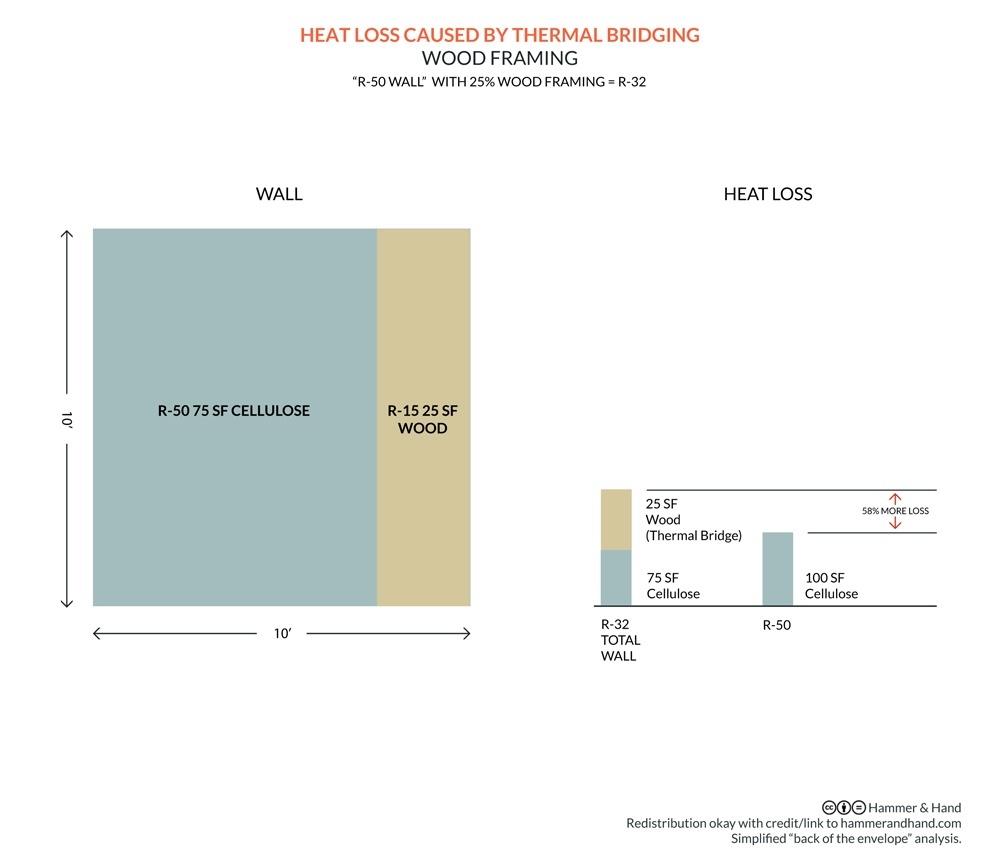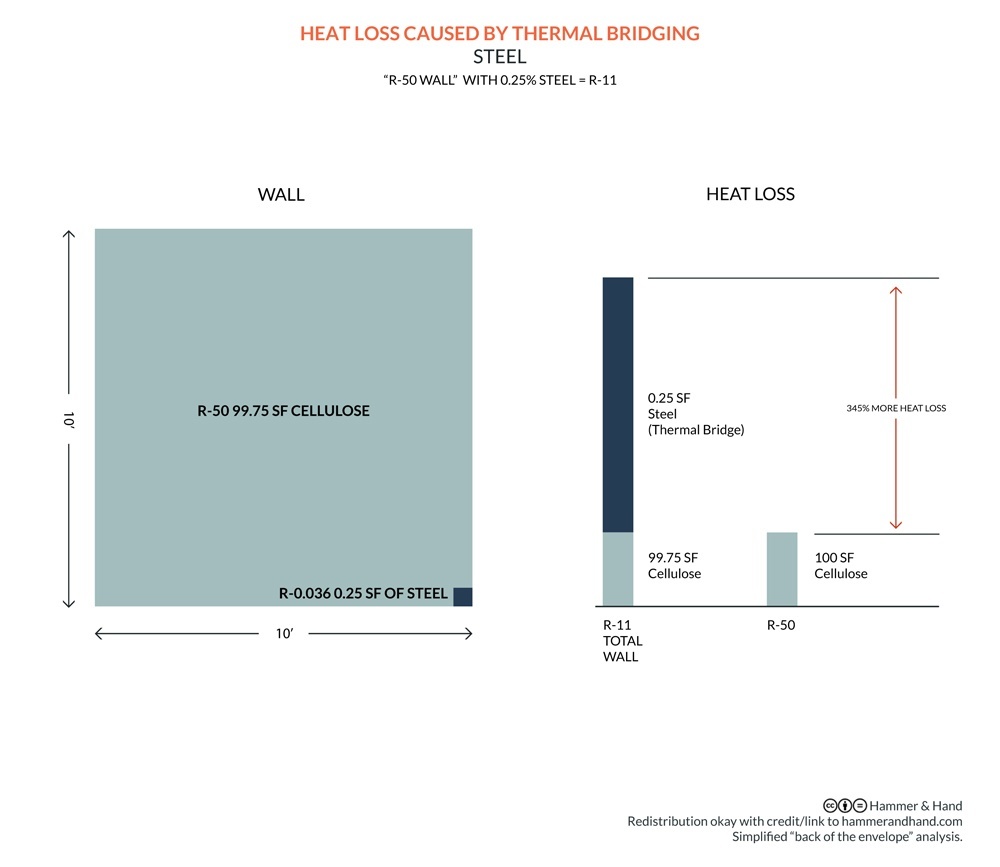A thermal bridge is any component in a building assembly that “bridges” inside and outside thermally, allowing heat and cool to short circuit thermal resistance built into the assembly. Thermal bridges allow heat and cool to bypass insulation (read more about thermal bridges here).
A common mistake in the building industry is to assume that a wall’s thermal resistance is equal to that of the insulation it contains. Consider a super-insulated example: a 15” thick wall full of cellulose insulation. 15” of cellulose insulation has an insulative value of R-50, so by definition the wall must be R-50, too. Right? Nope. We have to look at the thermal resistance of the wall in assembly. How is the wall constructed? Do any of its components create thermal bridges?
A standard wood frame wall, for instance, contains roughly 25% wood studs, leaving 75% for insulation cavity. And though wood isn’t particularly conductive, each of those studs represents a thermal bridge, particularly when compared to R-50 insulation. The back-of-the-envelope analysis below, prepared by Skylar Swinford, shows that the wood in a wood frame/cellulose insulation assembly drops the insulative value from R-50 to R-32, allowing 58% more heat loss than an R-50 cellulose monolith. (Note that the calcs below do not include the slight insulative value of surface air films.)

If we move to a more conductive material, like concrete, then the impact of thermal bridging becomes more dramatic. A 6” concrete beam cutting across the face of a 10’x10’ wall of R-50 cellulose will drop that assembly to just R-13. The concrete makes up just 5% of the assembly but leads to 293% more heat loss.

And the effect of a steel thermal bridge is crazy. Our back of the envelope analysis shows that a 6”x6” piece of steel – just 0.25sf – that penetrates a 100sf R-50 cellulose wall will drop the assembly’s thermal resistance to just R-11. In this example the steel makes up just a quarter of one percent of the total wall assembly but causes 345% more heat loss.

The moral of the story? Mind those bridges because they can wreak havoc with your building’s performance.
And it’s not just about comfort and energy efficiency. It’s also about avoiding building failure, because if warm, moist air hits a cold thermal bridge buried inside your wall, then water vapor will become liquid water, and rot and woe can ensue.
Featured image credit: Steel: Liesbeth den Toom, Concrete: Seier+Seier, Wood: Bartosz Mikolajczyk
Back to Field Notes